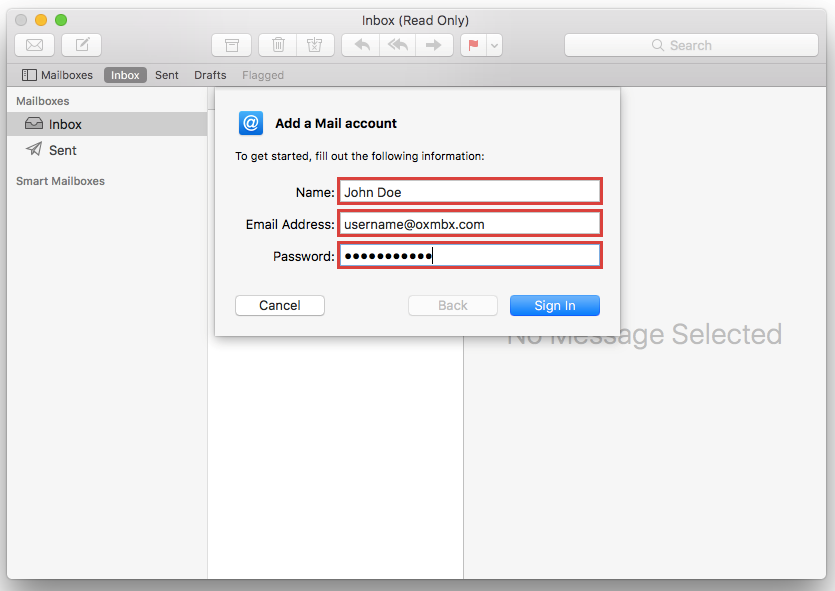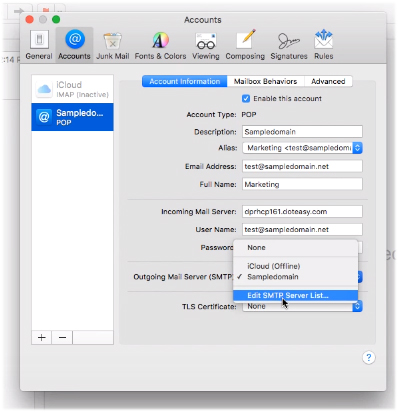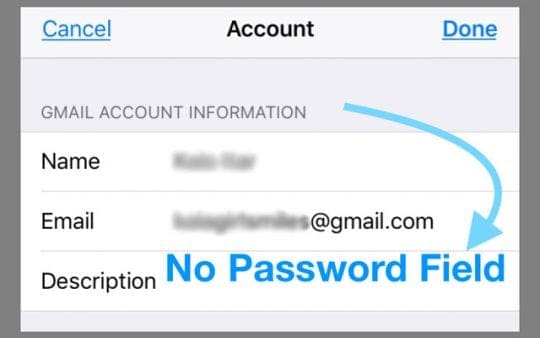

Many modern email clients let you log into your email through a web login interface where all you need to know is your email address and password. You can choose IMAP for its features but possibly run low on storage space if you keep too many emails, or you can choose POP to never run low on storage but miss out on the handy syncing features. If you decide to use POP, you might need to go into your email settings from a web browser first so that you can enable POP access.Īs you can see, the choice really is up to you and your situation. Most email providers disable POP by default but leave IMAP access open. If you prefer as little setup as possible, IMAP should be your choice.

As long as you set up your email account to remove emails from the server after they’ve been downloaded, you’ll never run out of space on the server but will also never lose a message (so long as you have them backed up on your device).
UPDATING PASSWORD MAC MAIL GMAIL IMAP DOWNLOAD
However, you could instead use POP to download the emails to your computer where you have more storage. If you use IMAP, and you want to keep all of your emails forever, you’ll quickly run low on space. Consider an example where you have a measly 200 MB of email space. Click on the Mail menu in the upper left (to the right of the Apple logo) Click on Add Account Click on Other Mail Account Click on Mail account Fill in the requested information: Name this will be the name shown on your sent emails Email your new email address.

However, if your email provider gives you limited storage space for emails, POP might be preferred. This makes the most sense for most people. Sending an email on one device will show up in the sent box on another device. When you delete an email from your phone, the same email will be removed when you check your messages on a computer or on your tablet. You’ll be able to access your email on as many devices as you want, and have them all be synchronized. You should pick IMAP over POP if you want maximum flexibility. This decision is completely up to you, but it makes the most sense to use IMAP. If you delete them or move them into other folders, you’ll see the changes in that email program only, not through the webmail interface or on any other email program you use with that email account. Once messages have been downloaded, anything you do to them isn’t reflected on the server. When you’re using POP email servers, your email program can’t send commands back to the server like IMAP can. POP is limited to downloading the emails only. This is how I solved it 3 days ago.Anything you do in the email program will also be done on the email server, so any other email client that’s connected to that account over IMAP will experience those identical changes. So he cant log in to his this account from outside. of mail counts will be shown.In my problem case, user even doesn't know his gmail id and password provided by the company to see only their mails. *My solution is for the case where a user can log in to his gmail account only through this application, if he logs into his account from outside, the database wont be updated so that wrong no. of recent emails will be displayed on the page. Now again when the users visits that page, it follows the above proceedure and his no.

When the users log in to his account, email_max_uid is updated with count($emails) $recent_mails_count = max($emails) - Array ĥ.Show the recent mails count echo count($recent_mails_count) Ħ.I have put a link which makes the user log in to his gmail account without asking his email id and password $recent_mails_count = count($unread_emails) $emails = imap_search($inbox,'ALL', SE_UID) $unread_emails = imap_search($inbox,'UNSEEN') $hostname = 'INBOX','user's email id','user's password') or die('Cannot connect to Gmail: '. of recent unread mails from a gmail account.For this I have installed IMAP in my Ubuntu system and tried some PHP iMAP functions.


 0 kommentar(er)
0 kommentar(er)
